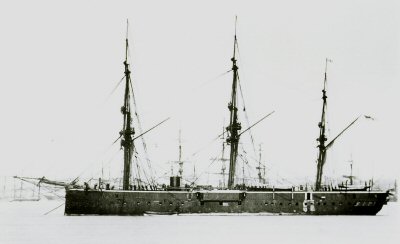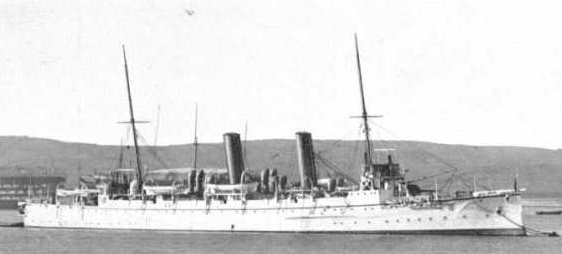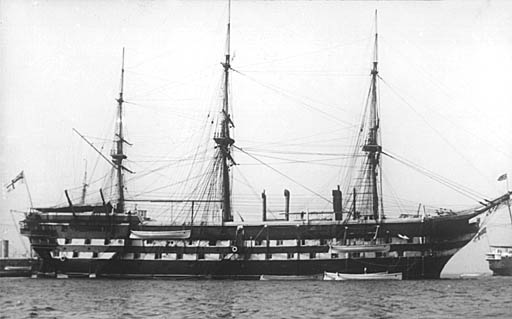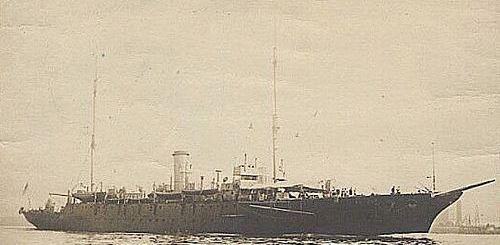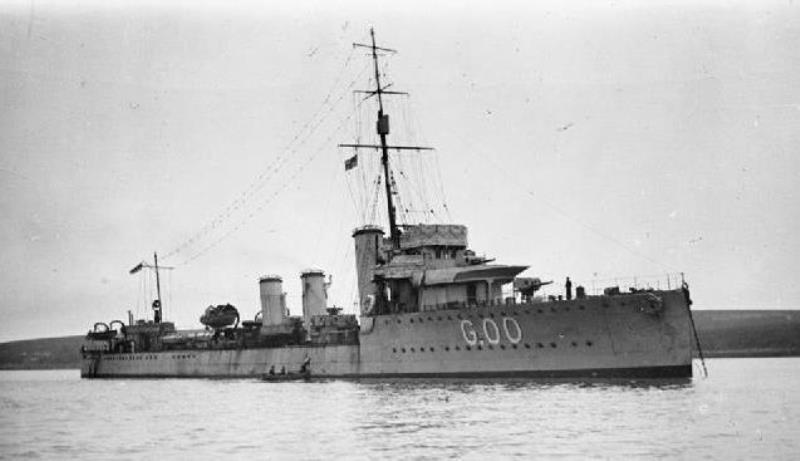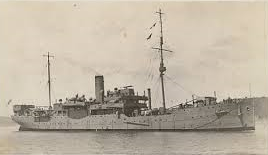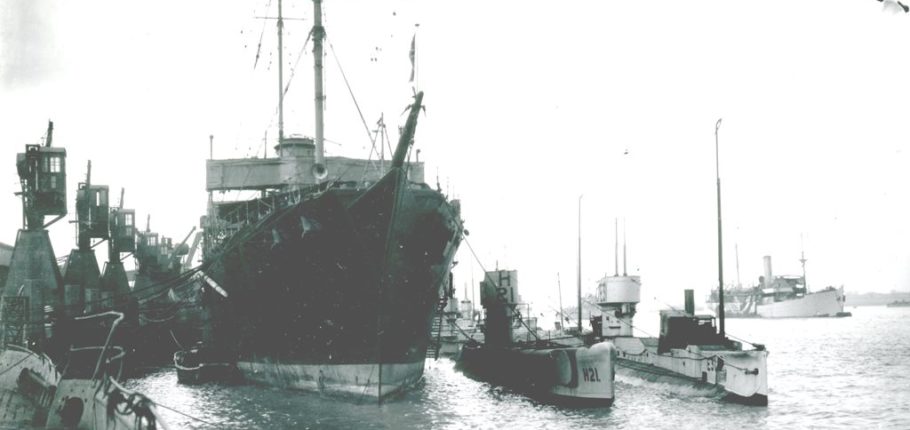
Depot Ships – World War 1
Depot ships provided services unavailable from local naval base shore facilities. to meet recreational needs of British Pacific Fleet personnel. Services provided by a depot ship depend upon whether typical client warship missions are measured in hours, or days, or weeks. A warship crew may be expected to remain at their stations for missions measured in hours, but longer missions may require provisions for dining, sleeping, and personal hygiene. The crew of small warships may carry individual combat rations and urinate or defecate from the weather deck. Longer missions typically require storage provisions for drinking water and preserved food, and some resting area for the crew, although rest may be limited to a sheltered spot to sit or recline. Cooking may be limited to warming food on an exhaust vent, and buckets may be used for bathing, laundry, and sanitary waste. Habitability standards vary among navies, but client warships large enough to include a head, bunks, a shower, a kitchen stove, refrigerated food storage, a drinking water distillation unit, and a laundry require little more than medical and repair service from a depot ship. Depot ships are similar to repair ships, but provide a wider range of services to a smaller portion of the fleet. Depot ships undertake repair work for a flotilla of small warships, while repair ships offer more comprehensive repair capability for a larger variety of fleet warships. Depot ships also provide personnel and resupply services for their flotilla. Some depot ships may transport their short-range landing or attack craft from home ports to launch near the scene of battle. The following summary of World War II depot ships indicates the range of locations and warships served:
HMS Adamant (I)
- Type. Depot Ship
- Class.
- Pennant. P37 , P00
- Builder. Cammell Laird
- Ordered. 1911
- Laid Down. 1911
- Launched. 12/07/1911
- Commissioned. 1911
- Fate. Scrapped 21/09/1932
-
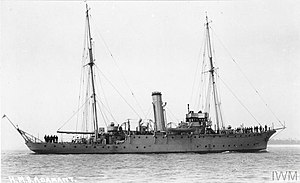
HMS Adamant
HMS Adamant was a launched by Cammell Laird on the 12th July 1911 and sold in 1932. Adamant served with the Eighth Submarine Flotilla at Harwich in 1914 and 1915. She later worked with submarines in the Mediterranean.
HMS Audacious
- Type. Depot Ship
- Class. Audacious
- Pennant.
- Builder. Robert Napier
- Ordered. 29/04/1867
- Laid Down. 26/06/1867
- Launched. 27/02/1869
- Commissioned. 1870
- Speed. 12 knots
- Fate. Scrapped 15/03/1927
HMS Audacious was ordered on 29 April 1867 from Robert Napier in Govan, Glasgow. She was laid down on 26 June 1867 and launched on 27 February 1869. The ship was completed on 10 September 1870 and commissioned the following month.
Upon completion she became guard ship of the First Reserve at Kingstown, Ireland, but was transferred the following year to Hull where she remained until 1874. The ship was ordered to the Far East that year to serve as the flagship for the China Station under the flag of Vice-Admiral Sir Alfred Phillips Ryder. Despite the presence of escorting tugs, Audacious grounded twice while she was transiting through the Suez Canal. She relieved her sister Iron Duke in Singapore, and later collided with a merchant ship during a typhoon in Yokohama. Iron Duke relieved her in turn in 1878. Audacious returned to her previous post in Hull in 1879, relieving HMS Endymion. She served there until she began a lengthy refit which included new boilers and the addition of a poop deck.
On the 16th August 1903 H.M.S. Audacious arrived from Chatham to become the new depot ship for destroyers until 1905. In 1906, she was recomissioned as part of the four-ship Fisgard boy artificers training establishment at Portsmouth. The ship was towed to Scapa Flow in 1914 after the start of the First World War to be used as a receiving ship and was renamed Imperieuse. In 1919 she was to be renamed Victorious, but the renaming was cancelled. She was towed from Scapa to Rosyth on 31 March 1920, where she remained as storeship until 15 March 1927, when sold to Ward of Inverkeithing for scrap.
HMS Bonaventure (I)
-
Type. Cruiser
-
Class. Astraea
-
Pennant. N41, N11
-
Builder. Devonport Dockyard
-
Ordered. 1889
-
Launched. 02/12/1892
-
Commissioned. 05/07/1894
- Speed. 19.5 knots
- Fate. Scrapped 12/04/1920
HMS Bonaventure was an Astraea second-class cruiser. She was a used as a submarine depot ship for c class submarines from 1914-1916. Bonaventure was built at Devonport Dockyard and launched 2nd December 1892 and completed 5th July 1894 served in the Pacific Squadron, returning in May 1906 to Devonport to be paid off. Went to Haulbowline Dockyard, Cork, Ireland to be converted into a depot ship for submarines. In mid-1913, she was in Harwich supporting the Sixth Submarine Flotilla and Seventh Submarine Flotilla. She was sold on 12 April, 1920, to the Forth Ship Breaking Company, Bo’ness
HMS Boscawen III
- Type. Depot Ship
- Class. Minotaur
- Pennant.
- Builder. Cammell Laird
- Ordered. 02/09/1861
- Laid Down. 30/10/1861
- Launched. 1904
- Commissioned. 1868
- Speed. 14 knots
HMS Agincourt, named after the victory at the Battle of Agincourt in 1415, was originally ordered on 2 September 1861 as HMS Captain, but her name was changed during construction. She was laid down on 30 October 1861 by Laird’s at its shipyard in Birkenhead. The ship was launched on 27 March 1865, commissioned in June 1868 for sea trials and completed on 19 December.
Agincourt was renamed Boscawen III and served twelve years at Portland. In 1905 she was moved to Harwich and renamed as Ganges II. After four years at Harwich, Ganges II made her final journey, to Sheerness, in 1909.
HMS Elfin
- Type. Depot Ship
- Class.
- Pennant.
- Builder.
- Ordered.
- Laid Down.
- Launched.
- Commissioned. 1905
- Fate. Scrapped 1928
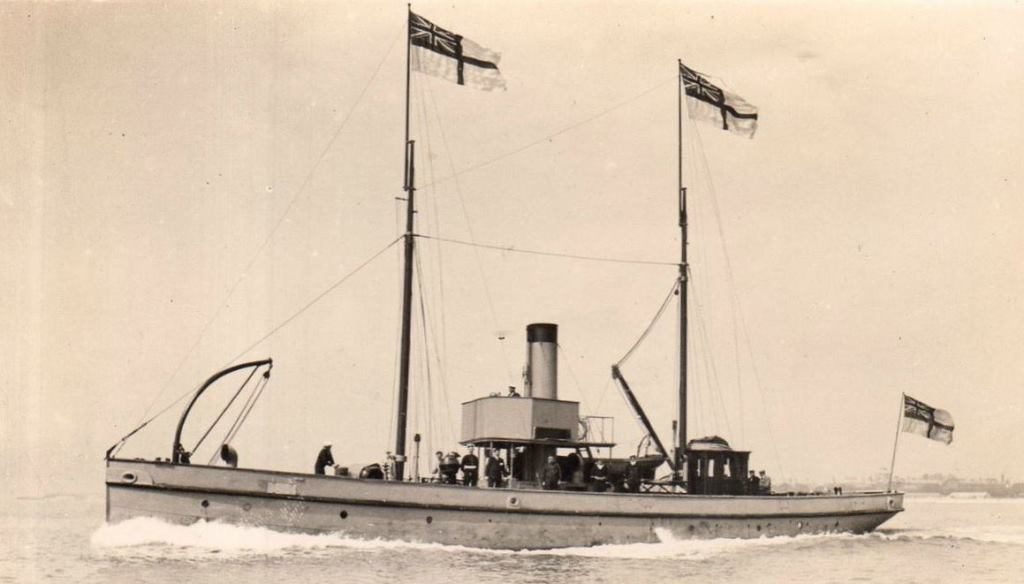
H.M.S. Elfin
HMS Elfin was a Submarine Depot Ship, formerly the War Department vessel Dundas, transferred to the Royal Navy in 1905 and sold in 1928.
About 7 o’clock on the 16th December 1910, while it was still dark and a gale was blowing Elfin was leaving Harwich Harbour when she came into collision with the submarine C8, which was bound for Felixstowe to renew petrol. The Elfin, which had some 20 or 30 seamen, who were being taken to the Thames, on board, was struck under water and went down within seven minutes. The submarine and other vessels, including the barge Swan, of Mistley, succeeded in rescuing all the men, with the exception of the five who are missing.
27/10/1910. Divers have recovered the bodies of Richard Millard, A.B.; Nicholas Morgan, leading stoker, and John George Stevens, who perished when the Elfin sank at Harwich after being damaged in collision with Submarine C8. The bodies were found on the mess deck, the collision having cut off the means of exit to the upper deck. It is expected that the Elfin will be beached in a few days, when the spring tides will permit of operations being resumed. The bodies of Walter Sharp and James Bain are still missing, and are not on the Elfin.
Elfin was raised and returned to service until 1928 when she was scrapped.
HMS Maidstone (I)
- Type. Depot Ship
- Pennant. P39, P4a
- Builder. Scott’s
- Ordered. 1911
- Laid Down. 1912
- Launched. 29/04/1912
- Commissioned. 15/10/1912
- Fate. Scrapped 31/08/1929
-
- HMS Maidstone was Submarine Depot Ship, built by Scott’s of Greenock and Launched on the 29 April 1912. she was sold for Scrapping on the 31st August 1932.
HMS Seymour
- Type. Depot Ship
- Class. Parker
- Pennant. G00, G20, D09
- Builder. Cammell Laird
- Laid Down. 23/11/1915
- Launched. 31/08/1916
- Commissioned. 1916
- Speed. 34 knots
- Fate. Scrapped 07/01/1930
HMS Seymour was launched by Cammell Laird on the 31st August 1916 Parker Class Flotilla Leader she was converted to a minelayer after completion and sold for scrapping in January 1930.
HMS St Lucia
- Type. Submarine Depot Ship
- Pennant. F27, P2a
- Builder. Richardson Westgarth
- Ordered. 1906
- Laid Down. 1907
- Launched. 21/11/1907
- Commissioned. 1916
- Speed. 12.75 knots
- Fate. Scrapped 05/01/1951
Launched at the shipyard of Furness Withy Co. Ltd., West Hartlepool with yard number 307, on 21 November 1907 for the Hamburg Amerikanische Packetfahrt AG, Hamburg, Germany.. Pennant in January 1918 P.2A and during the Second World War F27. With a displacement of 5.805 tons. Her crew numbered 262 men and her speed was 12,75 knots. Captured in 1914 and after conversion into a submarine depot ship was she commissioned in the Royal British navy in 1916. In the Second World War was she classified as repair ship. On 4 September 1946 sold to the Cia. Maritime Geojunior, Panama, renamed Sinain 1948, a year later laid up and finally broken up at La Spezia, Italy in 1951.
HMS Thames
- Type. Cruiser
- Class. Mersey
- Pennant. N43
- Builder. Pembroke Dockyard
- Ordered. 1884
- Laid Down. 1884
- Launched. 03/12/1885
- Commissioned. 1888
- Speed. 17 knots
- Fate. Sold 1920
-
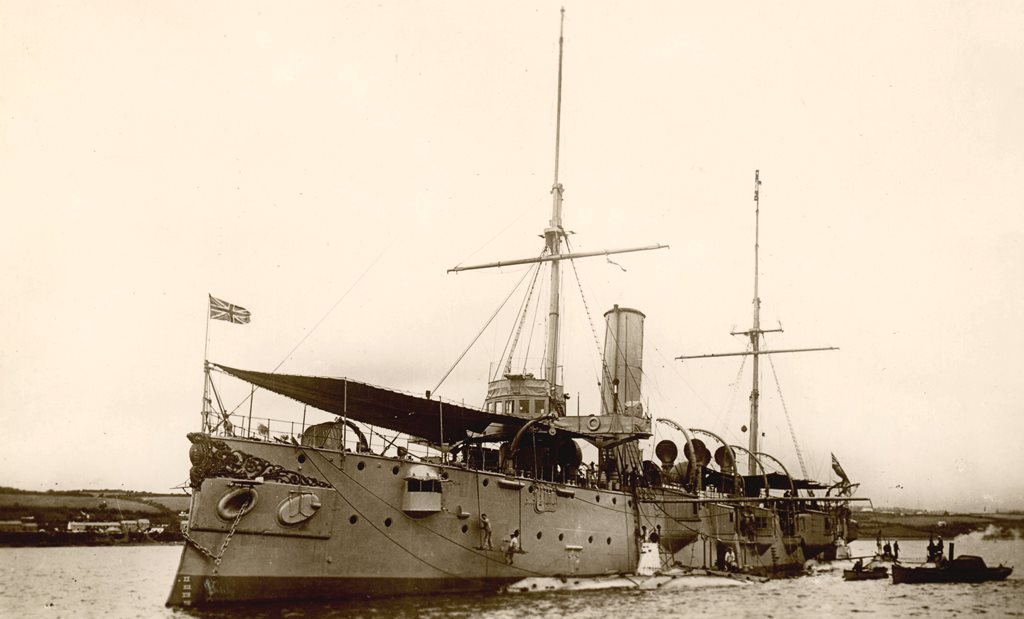
H.M.S Thames
HMS Thames was completed in 1888 as one of four second class protected Cruisers of the Mersey class, but served in the war as a Submarine Depot ship from 1914 at Harwich, Thames was launched on the 3rd of December 1885 by Pembroke Dockyard and sold to South Africa in 1920.
HMS Woolwich
- Type. Destroyer Depot Ship
- Pennant. AC, CA
- Builder. London & Glasgow
- Ordered. 1912
- Laid Down. 1912
- Launched. 05/09/1912
- Commissioned. 1914
- Speed. 13.5 Knots
- Fate. Scrapped 13/07/1926
-
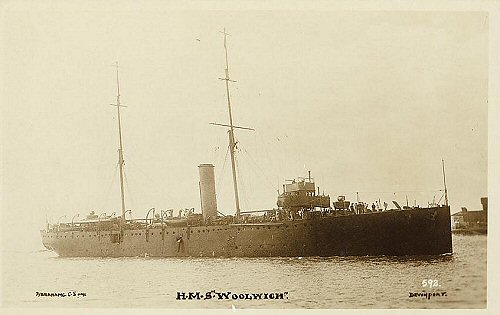
H.M.S. Woolwich
HMS Woolwich served with destroyers at Harwich in 1914 and then at Rosyth until the end of the war. She was with the First Destroyer Flotilla from at least July, 1914. In April 1916, she started also supporting the Thirteenth Destroyer Flotilla.
She recommissioned at Devonport on 3 February, 1920. and was sold for breaking at Hayle on the 13th July 1926.
We are adding more information to this site on a regular basis, if you wish to submit any photos or provide any information on naval vessels that were based or visited Harwich, then please use the contact page at the bottom of the screen.
Copyright Ownership.
We attempted to get the consent of copyright holders to use this material for nearly all of the photographs on the website.
In the few cases where names are available, a thorough search was made using telephone directories, photographic copyright directories, People Search and Google Area Search. None of the copyright owners could be traced in this way and we believe we have exhausted all reasonable avenues.
The consensus opinion of these authorities was that if any two of the following situations applied we would be deemed to have taken sufficient action to avoid infringing copyright laws:
Reasonable efforts made to contact the copyright holder
No financial gain will be made in relation to the photos
A letter is obtained from present owner of photos
There is a proviso included stating that if offence is caused document will be removed
The website owner undertakes to remove any photograph from the website where offence is caused. All the above conditions have therefore been met.
← Depot Ships – World War 2 Corvettes – World War 2 →
